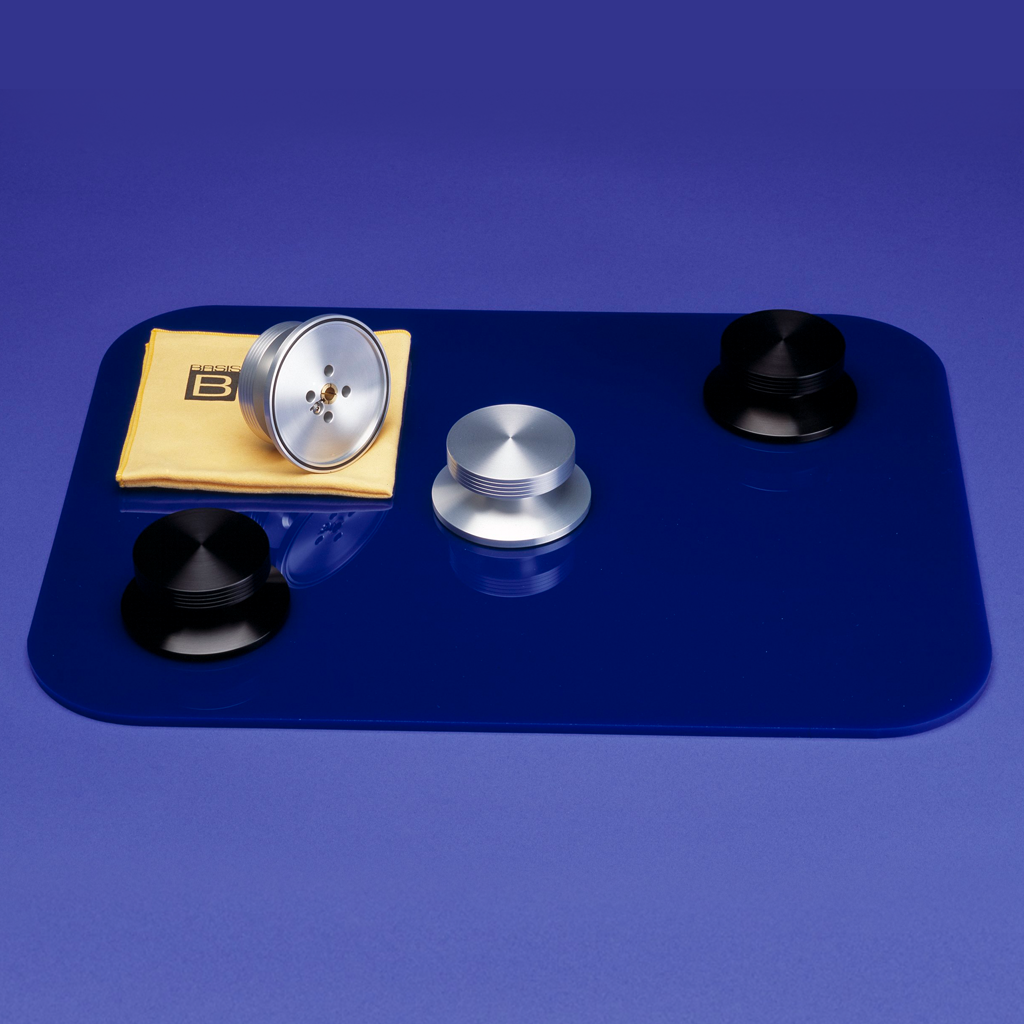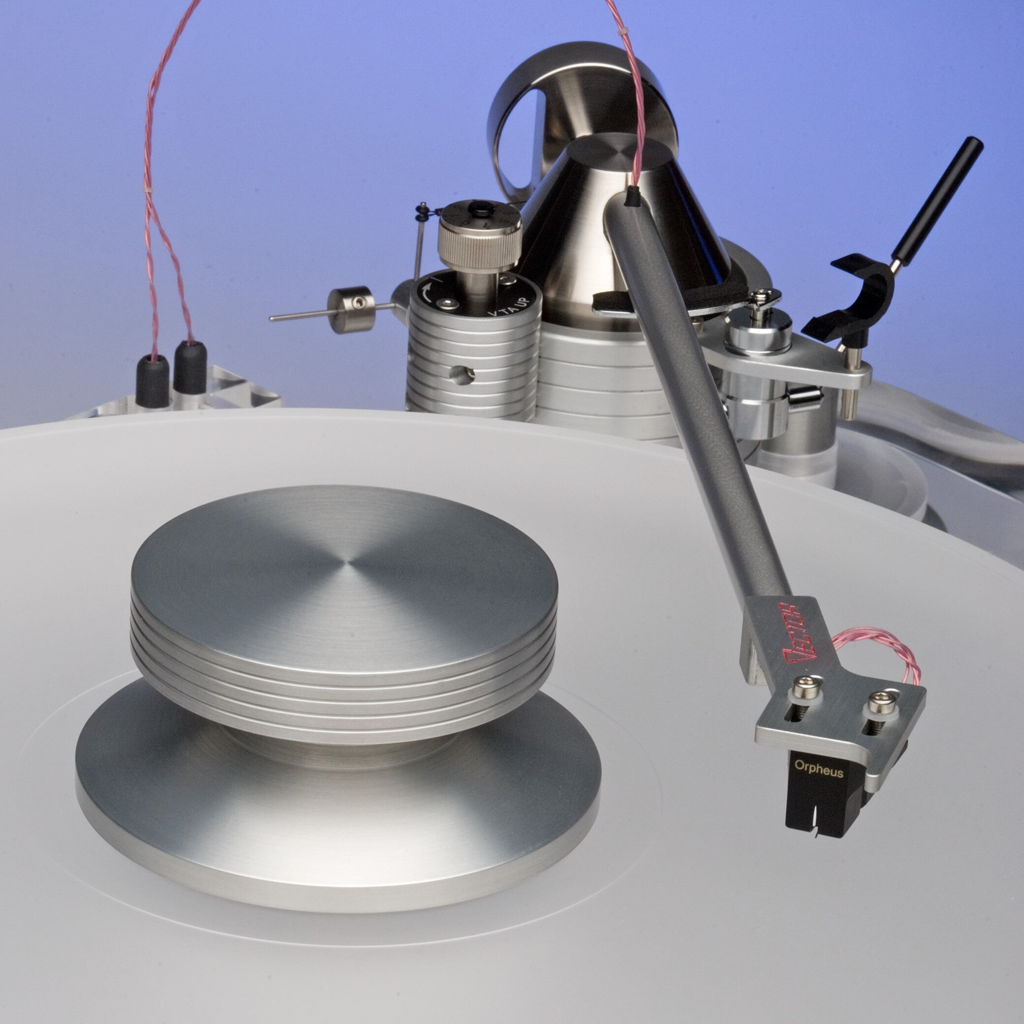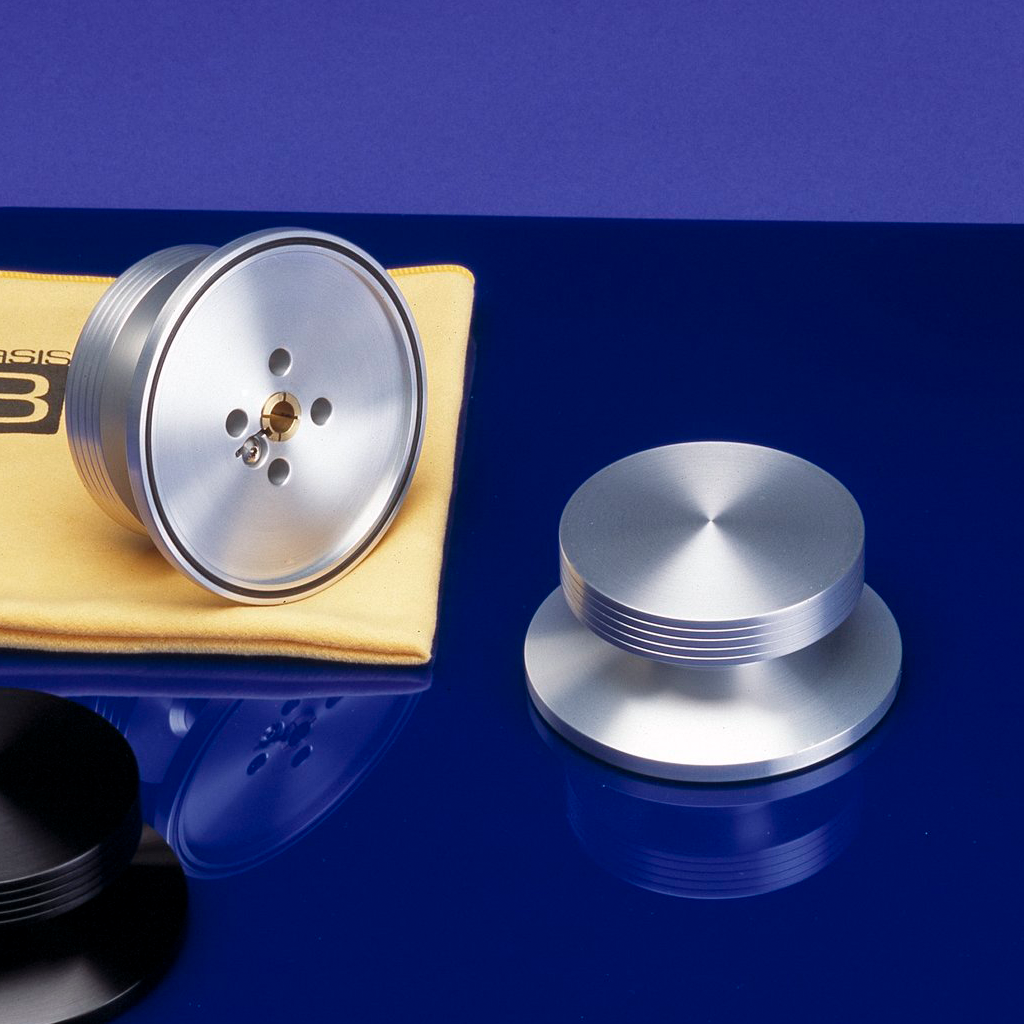Basis Reflex Clamp
A Study in Precision Machining
- Description
- Gallery
- Documents for Download

Basis Reflex Clamp
The Basis Reflex Clamp has been in continuous production since 1988. Like all Basis products, the design was complete when introduced . Only one upgrade to the original design has been required, and the Basis Clamp is still the market reference in terms of effectiveness, quality, and longevity. View the images of the Basis Clamp. It is a study in precision machining from aerospace materials to defense industry standards and fine finishing to perfectionist audiophile standards.
The Design
The Clamp is designed to mate with the smooth spindles on Basis turntables. External thread design spindles and screw-down clamps were rejected from the beginning. Such designs are irresponsible as they wear the center hole of the record creating centering uncertainties of the record. Excess clearances on the order of a few ten-thousandths of an inch result in detectable losses in speed stability. No valued record should ever be slid over a threaded spindle. Internal thread designs were rejected due to the possibility of stripping the threads. Further, the small internal thread needed is subject to wear and the creation of fine metal powder and chips, which should be avoided near records and cartridges. Although the Basis clamp uses a smooth collet against the smooth Basis spindle, the precision is so high that a smooth turn of the knob will allow the clamp to grip tightly enough that the entire turntable may be picked up by the clamp alone without the clamp slipping on the turntable spindle.
The underside of the clamp is undercut, leaving only the outside periphery of the clamp to contact the record. In this manner the clamp forces the record to “bow” downward slightly for better contact across the record surface. The clamp also increases the pressure on the platter/bearing interface for a more rigid coupling, which increases the precision of the motion of the outer, belt-driven platter surface.


The Sound
The flattening and improved coupling of the record to the platter reduces record resonances, resulting in smoother and more powerful sound with greater low-level detail and firmer bass. Slight improvements in imaging are noted due to the better damping of the record and firmer coupling of the platter to the record.
Products
Black or Silver
